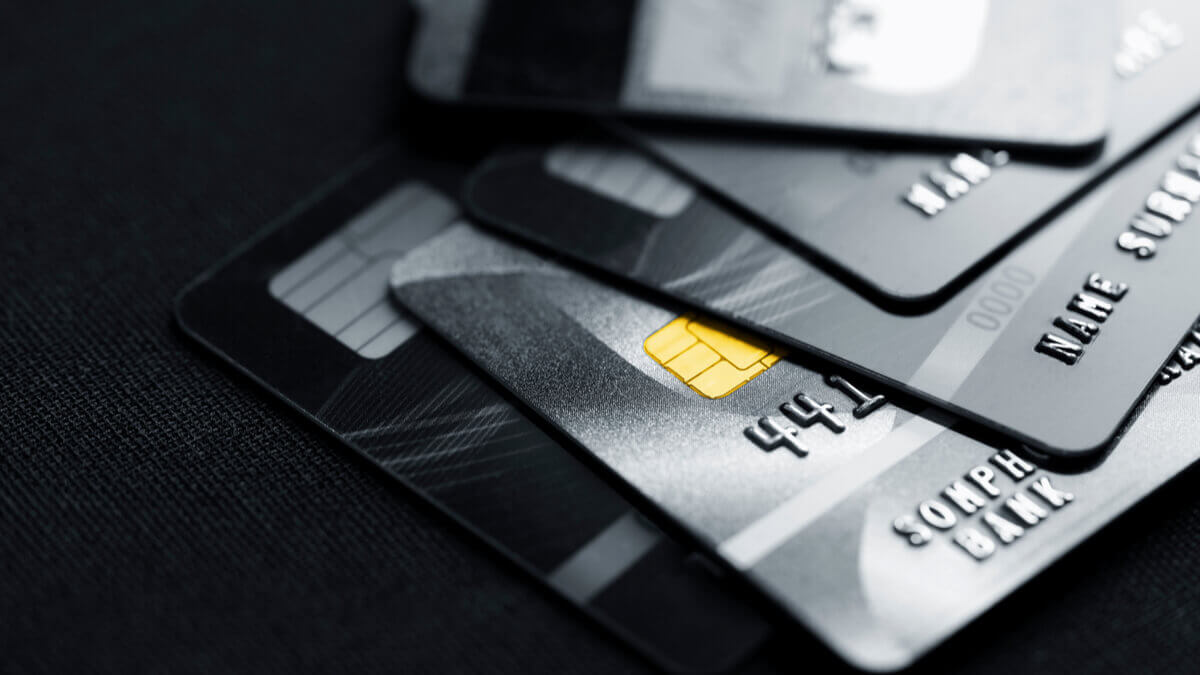Paysera alternatives: Which is the best for you?
Looking for a Paysera alternative? Compare the top 5 options in 2025 and find the best app for international payments, spending, and saving.

New to the US and looking at getting a credit card? Or maybe you’ve simply never needed a credit card before and you’re interested in the difference between secured credit cards vs unsecured cards? This guide has all you need to know.
We’ll walk through the difference between secured vs unsecured credit cards, and we’ll also introduce Wise as a great way to use your card to send payments overseas, with the Google exchange rate and no hidden fees.
We’ll unpack the details of secured credit cards vs unsecured cards in just a moment — first a quick overview to give you a flavor.
| Secured credit cards | Unsecured credit cards | |
|---|---|---|
| Best for | Building a US credit score quickly | Easy spending and reward opportunities |
| Eligibility | Based on ability to pay upfront security deposit | Based on US credit score and credit history |
| Costs | APR can be high No annual fee cards are common, but penalty fees and cash advance costs apply | Variable APRs, based on credit score Annual fee varies based on card type, penalty fees and cash advance costs also apply |
| Limits | Limit is the same as your security deposit — often pretty low | Limits based on your creditworthiness |
You can use a secured credit card much like any other payment card, for spending in stores and online, and making cash withdrawals.
However, a secured credit card is different to an unsecured card in that you’ll need to pay an upfront security deposit to get a card, and your card spending limit will be set to the same amount as the deposit you’ve handed over.
Once you have your secured credit card it works much like a regular credit card. You can use your card to spend up to your spending limit every month, and repay the amount in full at the end of the period to avoid penalty charges and interest.
If you don’t pay back the full amount you’ll be liable to pay interest on the outstanding amount, and your spend limit will be reduced for the following month.
The key difference with a secured vs unsecured credit card, then, is the security deposit you’ve paid upfront. This is often used in cases where the applicant has no or a low credit score in the US.
Your secured card spending is then reported to one or more credit scoring agencies. If you continue to use your card responsibly, you’ll see your credit score improve — and can transition onto an unsecured card and reclaim your security deposit if you wish to do so.
Secured cards don’t require a high credit score, or comprehensive local credit history in the US. This makes them a popular option with newcomers to America, or for people who have never previously accessed any credit services in the US.
Once you get your secured card you’ll be able to use it responsibly — and your spending history will be reported to one or more of the 3 major credit bureaus in the US.
This starts to quickly build a credit score and credit history, which can mean you’re able to move to an unsecured card in as little as 6 months.
Even if you don’t want or need to get an unsecured credit score, having a good credit history is useful.
Credit scores are used when you access other loan products, like unsecured consumer loans and mortgages, and sometimes when you are looking to rent a property, or even get some jobs which work with money or in financially responsible fields.
| ✅ Pros | ❌ Cons |
|---|---|
|
|
Not sure which unsecured card might be best for you? Here’s a head to head comparison on some key features, looking at some of the best secured credit cards out there.
You can also read more in our handy guide to the best secured credit cards available in the US.
| Discover® It! Secured Card¹ | Capital One® Platinum Secured Card³ | Citi® Secured MasterCard⁴ | |
|---|---|---|---|
| Features | No annual fee, with reward opportunities Security deposit can be as little as 200 USD | No annual fee Security deposit can be as little as 49 USD | No annual fee⁵ Security deposit from 200 USD to 2,500 USD |
| Fees | No annual fee Late payment up to 41 USD Cash advance 10 USD or 5% | No annual fee Late payment up to 40 USD Cash advance 3 USD or 3% | No annual fee Late payment up to 41 USD Cash advance 10 USD or 5% |
| APR | Variable 27.49% on purchases² Variable 29.49% on cash advances | Variable 29.74% | Variable 26.99% |
| Pros | Card use reported to all major credit bureaus Move to an unsecured card in as little as 7 months | Low minimum security deposit options Relatively low cash advance fees Move to an unsecured card in as little as 6 months | Card use reported to all major credit bureaus FICO score available Pick your own billing date |
| Cons | Relatively high APR | No reward earning opportunity | Depending on your credit limit you may need a high security deposit |
Banks and card issuers often have dozens of different types of unsecured credit cards on offer — these cards don’t have a security deposit like a secured credit card, but instead rely on your credit score or credit history to assess suitability.
When you apply for an unsecured credit card, the bank or card issuer will run a credit check to decide if you’re sufficiently creditworthy for the card — and what your spending limit may be.
Different cards have their own requirements for credit score — so you’ll see some marked as requiring a ‘good’ or ‘excellent’ credit score for example.
You’ll be able to see your credit score through an organization like FICO⁶ — get an account for free, or pay a fee to get more features, and see your score for one or more of the leading US credit bureaus.
As with secured credit cards, once you have your card in your hands you can use it to spend online and in person and to make cash withdrawals, to your credit limit.
At the end of the month you’ll get your card bill and can repay in full, or pay a minimum amount plus interest on the outstanding portion of your bill. As you spend you may be able to earn miles, cashback or rewards, depending on the card you select, too.
There are some key advantages when it comes to unsecured vs secured credit cards. For one, you’ll often find the APR on offer is lower.
You’ll also have a far greater range of card types to pick from, which can include no annual fee plans, and cards with some high reward earning opportunities.
You’ll usually have a far higher credit limit compared to a secured card, too — and as long as you’re using your card responsibly and repaying every month, your credit score will continue to improve over time.
| ✅ Pros | ❌ Cons |
|---|---|
|
|
Considering getting an unsecured credit card and not sure which might suit you? Let’s look at a side by side comparison of some popular unsecured cards, all of which have their own unique features to suit different customers.
| Citi Custom Cashback Card⁷ | Discover It Miles⁸ | Capital One Savor Rewards⁹ | |
|---|---|---|---|
| Features | Cashback card which adapts to your spending, to make sure you maximize rewards | Earn 1.5x miles per dollar, to redeem at home and abroad | Earn high cash back on eating out and dining in |
| Fees | No annual fee Late payment up to 41 USD Cash advance 10 USD or 5% | No annual fee Late payment up to 41 USD Cash advance 10 USD or 5% | 95 USD annual fee Late payment up to 40 USD Cash advance 3 USD or 3% |
| APR | Variable 18.49% — 28.49% | Variable 16.49% — 27.49% on purchases 29.49% on cash advances | 20.24%, 25.24% or 28.24% depending on creditworthiness 28.24% on cash advances |
| Pros | Earn up to 5% cashback on your most popular spend categories Introductory APR may apply, which reduces costs | Earn miles and cash them in easily, with different reward options No foreign transaction fee | High rewards on certain lifestyle categories No foreign transaction fee |
| Cons | Variable APR which can be on the high side | Discover may not be globally accepted | Excellent credit rating required |
Here’s a rundown of some key features, and how they compare for unsecured vs secured credit cards, to help you decide which is for you.
| Secured credit cards | Unsecured credit cards | |
|---|---|---|
| Availability | Most card companies and major banks offer at least one | Huge array of different cards to suit individual customer needs |
| Benefits | Build credit score quickly to access unsecured cards and loans more easily in future | Spread the cost of purchases over time, with no upfront security deposit |
| Security deposit | Usually 49 USD - 2,500 USD — refunded when you close your card | Not needed |
| APR | Can be high | Variable, based on credit score |
| Reward opportunities | Not often available | Very frequently available |
| Fees and limits | No annual fee cards are common, but penalty fees and cash advance costs apply Limit is the same as your security deposit — often pretty low | Annual fee varies based on card type — usually cards with higher reward earning opportunities have a higher charge — penalty fees and cash advance costs also apply Limits based on your creditworthiness |
Used responsibly, both secured and unsecured credit cards can help you establish and build a US credit score with one or more of the major credit bureaus.
Secured credit cards are usually the best option for people with a low — or no — US credit score, as they offer a quick way to build a decent score and transition to unsecured products.
If you already have a good credit score, an unsecured card can be used to continue to log your credit history, while earning rewards and accessing a higher credit limit.
Need to send a payment overseas? Choose Wise for an easy way to send money abroad. You can pay via credit card — both secured and unsecured — as well as debit card, ACH and wire transfers.
With Wise you get the mid-market exchange rate whenever you switch from dollars to the currency you need, with low, transparent fees¹⁰ and a fast delivery time.
Register a Wise account online or in the Wise app, then enter your payment details to generate an instant quote which shows you exactly how much you’ll pay for your transfer, and exactly how much the recipient will get in their bank account, in their preferred currency.
You’ll also be able to see a delivery estimate — which could even be instant or within just a few minutes¹¹. Pay with your credit card, and you’re done.
| Need more? Wise also offers: |
|---|
|
Get started with Wise
in just a few clicks
Both secured and unsecured credit cards can be handy ways to spend and withdraw money, at home and abroad.
Use this guide to decide which might suit you better — and don’t forget, if you’re sending a payment overseas using your credit card, you could get a better exchange rate and a lower overall cost if you pick Wise.
Sources:
Sources checked on 03.03.2023
*Please see terms of use and product availability for your region or visit Wise fees and pricing for the most up to date pricing and fee information.
This publication is provided for general information purposes and does not constitute legal, tax or other professional advice from Wise Payments Limited or its subsidiaries and its affiliates, and it is not intended as a substitute for obtaining advice from a financial advisor or any other professional.
We make no representations, warranties or guarantees, whether expressed or implied, that the content in the publication is accurate, complete or up to date.

Looking for a Paysera alternative? Compare the top 5 options in 2025 and find the best app for international payments, spending, and saving.

Looking for a Sendwave alternative? Compare the top 5 options in 2025 and find the best app for international payments, spending, and saving.

Looking for a SoFi alternative? Compare the top 5 options in 2025 and find the best app for international payments, spending, and saving.

If you’re a US expat or have foreign income, you have to report your assets in USD. Find out how the IRS exchange rate works in this guide.

Everything you need to know about getting a Travelex card in the US

Your full guide to MTN MoMo transfers.